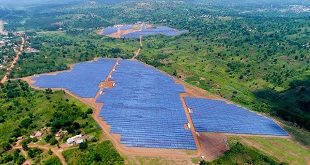
By Patrick Kagenda
Many have known it for sometime but latest figures from the Uganda Bureau of Statics (UBOS) show the full extent of the current nationwide drought on consumer prices.
The UBOS, which are based on statistics regarding the general change in prices of pre-selected consumer items in July, show that price levels changed at a higher rate than last year.
Price inflation, which is the measure of the general change in the price levels, rose by 0.5% in July compared to 0.3% the previous month. Figures for August were not yet out as we went to press but are likely to indicate a higher rate of inflation.
‘The main inflation driver remained food inflation,’ the UBOS statement said. However, a quick survey done in shops and markets and among agricultural products producers around Kampala showed that one man’s pain over inflation is another man’s gain.
Food products have also seen dramatic increment in their prices as a result of growing regional demand, especially the South Sudan market. A kilogram of maize meal is up from Shs 1,200 six months ago to Shs1, 800 today, beans from Shs 900 to Shs 1,800 a kilogram, groundnuts from Shs 1,800 to Shs 2,800 a kilogram, and rice from Shs 1,600 to Shs 2,200 a kilogram.
But diary products have seen the most dramatic rise in price levels because of drought in the main production centre, western Uganda.
Between end of July and mid-August the price of milk in Kampala shot up 100% from Shs 1,300 to Shs 2,600. Over the same period, a kilogram of cow ghee shot from Shs 6,000 to Shs 10,000.
‘There is neither grass nor water in the cattle rearing areas’, said Morrison Rwakakamba, the Uganda National Farmers Federation (UNFF), resident consultant /manager policy research and advocacy, ‘Because of this situation milk production has dropped by 30% among the big farmers while among the smallholder farmers it is below 50%’.
The big farmers are fetching water from distant places using trucks, which is not the case with the smallholder farmers.
Managers of Uganda’s leading processor of milk products, Sameer Agricultural and Livestock Ltd said in spite of capacity to process 450, 000 litres of milk per day, they were receiving only 300,000 litres per day because of the drought.
‘We had received a US$4 million dry powdered milk order but because of the scarcity of milk we failed to deliver on it,’ said Anoop Sharma, the chief executive officer.
He said, however that farmers have benefitted.
‘We increased farm gate prices to between Shs 600 and 700 from the Shs 280- 350 before the drought to get the milk,’ said Anoop.
Beef prices have, however, remained unchanged at between Shs 4,500 and 5,000 per kilogram.
Apparently, the drought has forced farmers to get rid of their cattle by selling them at a give away price. A cow that costs Shs 500,000 during the normal times is now being sold at Shs 30,000.
The UBOS figures for July indicated an easing in the price levels of some commodities including matooke, Irish potatoes, onions, beans, rice, maize floor and bread. But sweet potatoes, cassava, fruits and vegetables increased.
Price changes are likely to remain a major issue of concern for most consumers whose purchasing power is being eroded by the double digit rates of inflation over a two year period.
Meanwhile, top diary farmer and industrialist James Mulwana of Jesa Mixed Farm is challenging farmers to adapt to the changing climate. Mulwana says because he practices modern farming, he has not been affected all that much by the drought. ‘It has affected my out growers because they rely on traditional farming methods,’ he said.
Rwakakambe says, however, that agricultural institutions like the National Agricultural Advisory Services (NAADS), National Agricultural Research Organization,(NARO) , research centers like Kawanda, Namulonge, Kacwekano, Serere and others should work with farmers and plant drought resistant nutritious grass that can be used in hard times.
‘The other important area that needs urgent attention is the water preservation in the cattle corridor areas. We need heavy investment in valley dams to store water so that when there is a drought it doesn’t take people by surprise,’ he said.
For now, the Uganda Meteorology Department has announced heavy rains starting in September. As a result, you may expect the prices of food to either remain stable or reduce.
 The Independent Uganda: You get the Truth we Pay the Price
The Independent Uganda: You get the Truth we Pay the Price


